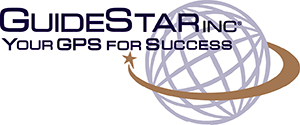
Every business leader knows financial capital is critical for the long-term viability of any enterprise, but few acknowledge it is merely the lagging indicator of how leaders align, develop, and nurture, the HUMAN CAPITAL that exists within a company.
The current debates over Artificial Intelligence (AI) and the possible replacement of humans with machines or machine-based knowledge should put all organizational leaders on notice that understanding the overwhelming contribution of HUMAN CAPITAL to a company’s success must be clarified and understood.
What Research Tells Us
Deloitte Consulting has been studying Human Capital Management Trends since 2014,[i] and their 2025 report[ii] states organizations need to strike a balance between agility and stability, but only about 6% of companies are making real progress in addressing this challenge. According to Deloitte, tension between business and human outcomes has been rising with less than 10% of companies able to establish “human sustainability – the ability to create value for all people connected to the organization- as a guiding business strategy” (p. 3). The argument is no longer about short-term results versus long-term value; it’s about ensuring both exist.
The Gallup Organization[iii] has also tracked employee engagement for well over two decades, and despite small variations in the number of engaged employees over the years, engagement has yet to crease 35% consistently while actively disengaged employees constitute nearly 20 % of the workforce. This means that at any time, nearly two-thirds of the workforce is disengaged, either actively or passively, which has significant implications for productivity, growth, and innovation.
In 2016, Deloitte[iv] noted the top three Human Capital Management trends as Organizational Leadership, Organizational Culture, and Organizational Design. In 2023[v], Deloitte cited new “fundamentals” for a world less defined by boundaries, specifically not defining work by jobs, place, or “traditional” roles, with greater emphasis on partnerships and experimentation with “what’s possible” to create sustainable work models, elevated outcomes, and a better world. In short, the overarching trends are about engaging HUMAN CAPITAL, yet the Gallup data reflects companies are not doing a good job doing so.
In an earlier post about “Thinking Differently in a VUCA-D2-BANI World,” I suggested that Boyd’s OODA Loop is a solid framework for examining situations and determining appropriate actions. The remainder of this article applies OODA for a closer examination of Character, the second anchor for achieving performance excellence.
Observations
How do you hire people for your organization now? Are you still hung up on technical skills and past performance as reflected in resumes or do you have a specific design through which you obtain the best people who can collaborate and engage effectively with others? Do you hire for Character and train for skill or do you hire for skills and hope candidates can fit into your culture?
The overarching challenge of running a successful business today extends well beyond simply owning a company and making a profit. As I noted in my blog post that introduces this article, some business owners believe private ownership entitles them to make decisions about the company without consulting business partners and to dictate to everyone they employ how they will work. This approach is clearly archaic and out of step with the evolution of American business.
Ownership no longer gives someone the right to dictate how jobs are done; a greater responsibility exists to ALIGN ALL human capital to achieve full potential, a challenge for which some leaders are not equipped because of their entrepreneurial DNA[vi]. In today’s environment, “old” ways of leadership such as command and control, “do it my way,” or “we’ve always done it this way” simply do not work for several reasons.
Peter Drucker predicted the Age of the Knowledge Worker well before it arrived, but it is here to stay. Today’s workers are much more tech savvy, independent, and knowledgeable in many ways. Building trust with those around us takes work and leadership, based on core values of trust and care, as noted in a previous article.
Orientation
Just because a person owns a business does not automatically qualify them to LEAD the business. Building trust also requires replacing transactional leadership styles with transformational leadership. Transformational leadership teaches that the character of a leader is essential to success. Effective leadership requires the exercise of key traits such as will, intellect, courage, presence, and energy, but it requires more because the character of the leader underpins all these traits. Character is defined by the values one chooses to put into action, which is the essence of leadership, regardless of the situation.
Keith McFarland[vii] explained how Character operates at BOTH individual and organizational levels, i.e., The character of an organization lies within the processes through which individuals act and reinforce individual character traits. Organizational character exists in how values translate into actions through which employees serve stakeholders, both internal and external.
Organizational Character directly affects an organization’s reputational capital and how people within and outside the organization perceive an organization’s values in actions, which is the definition of Character.
Character trumps everything, including training.
The five traits above have separated winners from losers, time and again. We study leaders to understand their decision-making, but we should scrutinize those decisions through the lens of character. Effective leaders must have strong character traits to face adversity, but we need to understand how character shows through in our actions, which either give confidence to those around them or cause distress or consternation that can lead to less than effective performance or worse, disengagement and resignations.
Your people expect you to lead without being a micromanager. If you hire the right people whose personal character traits align with those of your company AND they have the technical competence to do their jobs, then leaders move to being coaches and guides who help others develop their capabilities to do the right things and to do more. Hiring the right people who become teammates, partners, and collaborators strengthens Human Capital by tapping into the knowledge, intellectual, and relationships capital of all players, not merely a few.
Today’s world is too unpredictable and uncertain, but if you have the right people of character on board, and they are in the right seats where they can contribute their KASH (Knowledge, Abilities, Skills, and Habits) to solve their toughest challenges each day, then you have the foundation for transformational leadership, which can have positive effects throughout an enterprise by raising the confidence of everyone to do their best work.
Why Character is important
Just as Character represents the qualities and attributes through which an individual person is known, so organizations are also known by the traits employees employ in working with others, such as reliability, honesty, empathy, and trustworthiness. Companies that hire for Competence or Skills First may allow individuals with character flaws to pollute a company, which can cause some good workers to leave.
High-performing companies use the Three Cs of Hiring – Character, Commitment, then Competence, in that order – to find and secure the best candidates who are not only competent but who are also the right fit with their culture.
In this continuation of this article, we’ll hone in on the TWO sides of Character – Performance Character that focuses on the technical aspects of work and Moral Character that focuses on the creative side of work. As you can probably guess, each side of Character taps into one side of the brain. And it’s no coincidence that the companies that are able to do so most effectively are also the highest performing.
[i] Go to https://www.deloitte.com/us/en/insights/topics/talent/human-capital-trends/human-capital-trends-archive.html to access Deloitte’s Global
[ii][ii] For the latest 2025 State of the Global Workplace go to https://www.gallup.com/workplace/349484/state-of-the-global-workplace.aspx
[iii] Go to https://www.gallup.com/Search/Default.aspx?q=Employee+Engagement+Reports for longitudinal reports from the past 20 years for more detailed data related to engagement statistics.
[iv] Go to Deloitte’s Global Human Capital Trends 2016: The new organization, Different by design report for more details. https://www.deloitte.com/content/dam/insights/articles/2016/human-capital-trends-introduction/dup-globalhumancapitaltrends-2016-4.pdf
[v] See https://www.deloitte.com/us/en/insights/topics/talent/human-capital-trends/2023.html for more details.
[vi] For a deeper understanding of the four types of entrepreneurial DNA – Builder, Opportunist, Specialist, Innovator – go to the book by Joe Abraham (https://www.amazon.com/Entrepreneurial-DNA-Breakthrough-Discovery-Strengths/dp/0071754512), view a video where Joe explains the DNA types (https://video.search.yahoo.com/search/video?fr=mcafee&p=entrepreneurial+dna+joe+abraham&type=E210US1494G0#id=2&vid=cf628be6811b26a98f15d8a07e9bcc1b&action=click) or take the DNA Assessment ( https://bosidna.com/assessment)
[vii] See McFarland, K. (2008). The breakthrough company: How everyday companies become extraordinary performers. New York, NY: Crown Business.
